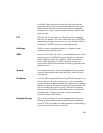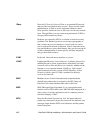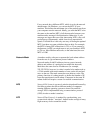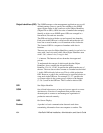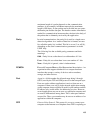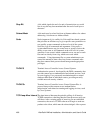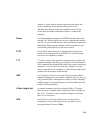462 AlterPath KVM/net Installation, Administration, and User’s Guide
IPsec Short for IP Security Protocol, IPsec is an extended IP protocol
that provides encrypted security services. These services enable
authentication, as well as access and trustworthiness control.
IPsec provides similar services as SSL, but it works on a network
layer. Through IPsec you can create encrypted tunnels (VPN) or
encrypt traffic between two hosts.
Kerberos Kerberos was created by MIT as a solution to network security
problems. The Kerberos protocol uses strong cryptography so
that a client can prove its identity to a server (and vice versa)
across an insecure network connection. After a client and server
has used Kerberos to prove their identity, they can also encrypt all
of their communications to assure privacy and data integrity as
they go about their business.
KVM Keyboard, video and mouse interface to a server.
LDAP Lightweight Directory Access Protocol. A software protocol for
enabling anyone to locate organizations, individuals, and other
resources such as files and devices in a network, whether on the
Internet or on a corporate intranet. LDAP is a "light weight"
(smaller amount of code) version of DAP (Directory Access
Protocol), which is part of X.500, a standard for directory
services in a network.
MAC Medium Access Control. Internationally unique hardware
identification address that is assigned to the NIC (Network
Interface Card) which interfaces the node to the LAN.
MD5 MD5 (Message-Digest algorithm 5) is a cryptographic hash
function with a 128-bit hash value. MD5 has been employed in a
wide variety of security applications and is commonly used to
check the integrity of files.
MTU Short for Maximum Transmission Unit, the largest physical
packet size, measured in bytes, that a network can transmit. Any
messages larger than the MTU are divided into smaller packets
before being sent.










